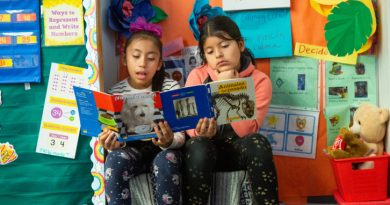District outreach critical as 10M households benefit from Affordable Connectivity Program
Dive Brief:
- The $14.2 billion Affordable Connectivity Program, funded by the Infrastructure Investment and Jobs Act passed in November, has enrolled 10 million households to help provide broadband to low-income families, the Biden administration announced Monday.
- The program provides financial assistance up to $30 per month for internet service for eligible households and $75 per month for households on qualifying tribal lands, according to the Federal Communications Commission. Eligible households can receive up to $100 in a one-time discount to purchase a laptop, desktop computer, or tablet from participating providers if the household spends between $10 and $50 toward the purchase.
- Among the 28.2 million U.S. households that do not have access to the internet, 18.1 million are in communities with broadband infrastructure but cannot afford to connect, according to a fall report by EducationSuperHighway, a nonprofit focused on closing the digital divide.
Dive Insight:
The efforts to fund a longer-term program to help families afford broadband are a major step to address the digital divide, which most visibly impacted students who have been learning remotely on-and-off throughout the COVID-19 pandemic.
While the existence of a longer-term funded program to help families afford broadband is a win, the vast majority of eligible families who could really benefit from the ACP don’t know it exists, said Jack Lynch, chief operating officer of EducationSuperHighway.
The key role districts can play involving the ACP is to drive awareness, Lynch said.
“School districts, they’re a trusted messenger to their families,” he said. “School districts can play a big role in helping to get the word out.”
A lot of districts should have also collected strong, helpful data about which students don’t have internet access outside of school since the pandemic began, Lynch said, and they can use that information to connect them to the ACP for a more long-term solution. The funding for the ACP is estimated to last for 3-5 years, Lynch said.
One way to enroll a household into the ACP is to prove if a child qualifies for free or reduced-price lunch. If schools proactively provide or readily seek those certification forms for families, that can help ease the burden for families and streamline the application process for them, Lynch said.
Lynch has worked with organizations and districts looking to help enroll people who can’t afford internet to sign up for the ACP.
From what Lynch has seen so far, he said the enrollment process could be improved and streamlined. For instance, Lynch said the program requires applicants to have an email, but those who need broadband the most don’t always have an email address. There’s also some documentation required that isn’t always easily accessible, he said.
Once an enroller is nationally verified to participate in the program, they also have to sign up with an internet provider, which has its own set of challenges, Lynch said.
Those who were previously enrolled in the Emergency Broadband Benefit program will receive monthly benefits until March 1, and must transition into the ACP to continue receiving a broadband discount. The EBB began in February 2021 and was a temporary $3.2 billion program that provided low-income households up to $50 per month in financial assistance for internet access.
Of the 9 million households enrolled in the EBB program, 1.1 million benefited from the National School Lunch or School Breakfast Program for free and reduced-price meals, according to the Universal Service Administrative Co. That data point is the best way to gauge how many K-12 students have directly benefited from these types of FCC internet affordability programs so far, Lynch said.
Those looking to enroll in the program have concerns about what will happen next when the federal assistance runs out within the next 3-5 years, he said. Particularly, enrollers are worried if they will have to pay the bill if the funding does not get renewed, Lynch said.
Source: https://www.k12dive.com/news/district-outreach-critical-as-10m-households-benefit-from-affordable-connec/618954/




